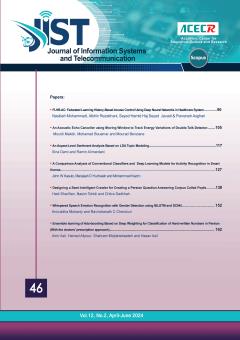Edge detection is a fundamental tool that plays a significant role in image processing, and performance of high-level tasks such as image segmentation and object recognition depends on its efficiency. Therefore, edge detection is one of the well-studied areas in image p
More
Edge detection is a fundamental tool that plays a significant role in image processing, and performance of high-level tasks such as image segmentation and object recognition depends on its efficiency. Therefore, edge detection is one of the well-studied areas in image processing and computer vision. However, it is clear that accurate edge map generation is more difficult when images are corrupted with noise. Moreover, most of edge detection methods have parameters which must be set manually. In recent years different approaches has been used to address these problems. Here we propose a new color edge detector based on a statistical test, which is robust to noise. Also, the parameters of this method will be set automatically based on image content. To show the effectiveness of the proposed method, four state-of-the-art edge detectors are implemented and the results are compared. Experimental results on five of the most well-known edge detection benchmarks show that the proposed method is robust to noise. The performance of our method for lower levels of noise is very comparable to the existing approaches, whose performances highly depend on their parameter tuning stage. However, for higher levels of noise, the observed results significantly highlight the superiority of the proposed method over the existing edge detection methods, both quantitatively and qualitatively.
Manuscript profile


